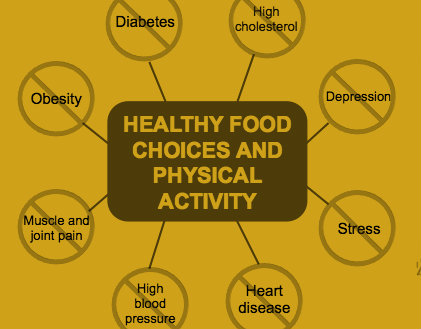The United States has the highest level of health expenditure in the world [1]. This means that the US spends more of its gross domestic product (GDP) on healthcare than any other country. However, according to the World Health Organization (WHO), the US is not included on the list of the top 10 countries with the highest life expectancy [2]. Additionally, the CDC reports steadily rising rates in obesity and diabetes in the US over the course of the past few decades [3].
There are many ways for physicians to contribute to the health of their patients. In medical school, we learn the physiology and workings of the body in depth, and memorize the detailed mechanisms of medications. The material we learn is so complex; however, somehow some of the most simple but incredibly effective remedies, such as exercise and nutrition, have remained underutilized.
Many studies demonstrate that being physically active and eating healthy foods can stave off weight gain and contribute to cardiovascular, musculoskeletal, and emotional health [4-8]. While the benefits of exercise and nutrition may seem second-nature to those studying the human body for hours every day, these choices are not intuitive or attainable for everyone, including our patients. Some people may not have the education or exposure to make informed, healthy lifestyle choices. For example, they may not know how to choose healthy food items in a grocery store, or they may not know which exercises are best suited for them. Many people have barriers, such as a limited budget for food or a medical condition that limits their physical activity. Others view exercise and nutritional eating as personal preference rather than appreciating the full extent of the effect these choices have on their health. If physicians don’t recommend exercise and nutrition on a regular basis, patients may not view them as important to their health. However, the limited amount of time and overwhelming amount of information and procedures a physician has to address in each visit means that lengthy exercise and nutrition counseling may not be able to fit into a single patient encounter.
The Exercise and Nutrition in Medicine (ENIM) Project is a student-led project founded to address these very issues. A group of students came together with their own expertise and passion to help impart important knowledge of exercise and nutrition to our patients. ENIM’s first event was a riveting lunch talk on nutrition by Dr. Alex McLaren, the esteemed director of the orthopaedic residency program at Banner University Medical Center. His talk sparked the interest of students and paved the way to other great activities. In March, ENIM collaborated with Phoenix Day to teach local residents healthy recipes with a live cooking show. In our latest project, ENIM is currently designing an Exercise and Nutrition Brochure with accompanying training for medical students to use to quickly and effectively counsel patients on healthy and effective lifestyle choices. If you are interested in learning more about the Exercise and Nutrition in Medicine Project, contact: nechamasonenthal[at]email.arizona.edu.
- “Health Expenditure, Total (% of GDP).” Data. N.p., n.d. Web. 17 Nov. 2014. <http://data.worldbank.org/indicator/SH.XPD.TOTL.ZS>.
- “World Health Statistics 2014.” WHO. N.p., n.d. Web. 21 Nov. 2014. <http://www.who.int/mediacentre/news/releases/2014/world-health-statistics-2014/en/>.
- Kennelly, C. Diabetes and Obesity in Arizona and the U.S. Lecture. August 27, 2014. University of Arizona College of Medicine – Phoenix
- Dinas PC, Koutedakis Y, Flouris AD. Effects of exercise and physical activity on depression. Ir J Med Sci. 2011;180(2):319-325.
- Gregg EW, Cauley JA, Stone K, et al. Relationship of changes in physical activity and mortality among older women. JAMA. 2003;289(18):2379-2386.
- Leung Yinko SS, Stark KD, Thanassoulis G, Pilote L. Fish consumption and acute coronary syndrome: A meta-analysis. Am J Med. 2014;127(9):848-57.e2.
- Shirado O, Doi T, Akai M, et al. Multicenter randomized controlled trial to evaluate the effect of home-based exercise on patients with chronic low back pain: The japan low back pain exercise therapy study. Spine (Phila Pa 1976). 2010;35(17):E811-9.
- Moore HJ, Douthwaite W, Skeaff CM, Summerbell CD. Effect of reducing total fat intake on body weight: Systematic review and meta-analysis of randomised controlled trials and cohort studies. BMJ. 2012;345:e7666.
Nechama Sonenthal combined her passions for art and medicine by obtaining her undergraduate degree in music therapy from Arizona State University. She continues to explore the role various approaches, including art, play in the overall health of an individual. She is currently a third year medical student at the U of A College of Medicine - Phoenix, where she is co-leader of the Integrative and Preventive Medicine Interest Group.

